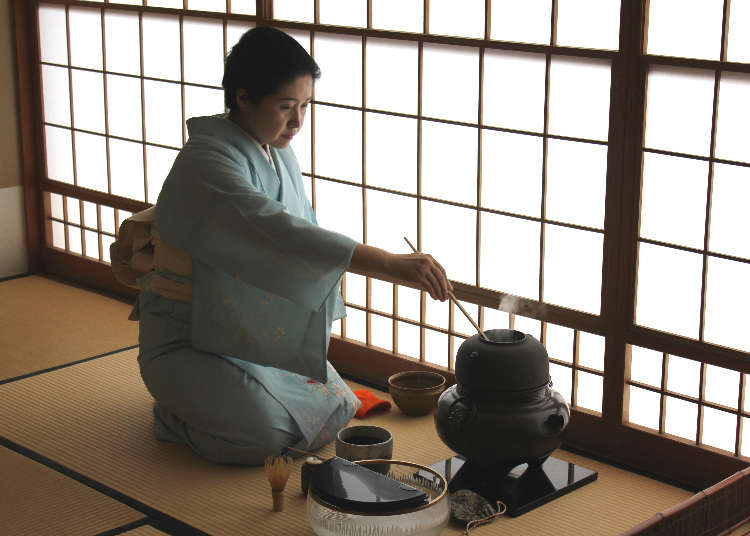
Four students who study Japanese in a university in Canton, China, have made their first trip to Japan. They experience the culture they've been interested in from long before right at the source. Today, they'll be taking on a genuine tea ceremony -- and this is what they saw!
Kaiseki Food to Enhance the Flavor of the Tea
Providing today's beginner tea ceremony lesson is Masudaya, located a three minute walk away from Tokyo's Shin Ookubo station. This storied shop, 90-years-old when the Olympics come around, has both a proper tea house in a quiet neighborhood and a tea ceremony classroom that sells the highest quality tea utensils gathered from all over Japan, as well as provides lessons for beginners and foreigners.
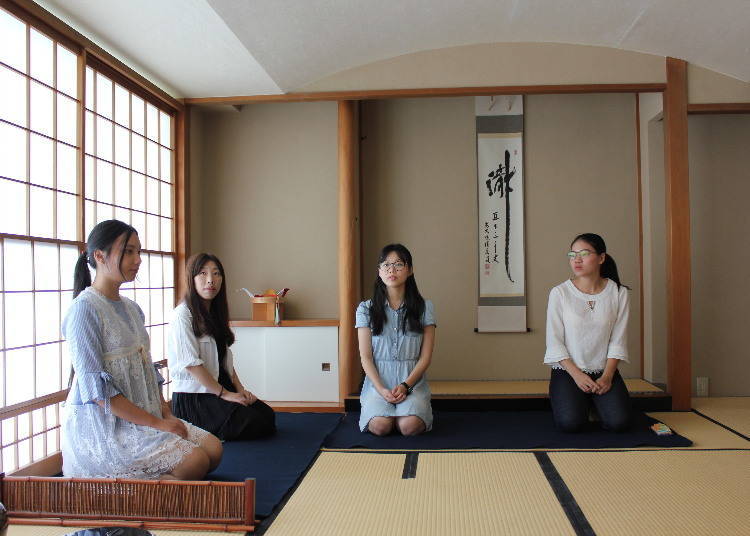
The four wear white socks, as not to dirty the floor with bare feet, and sit on their knees in the main room. Tea ceremony is the ultimate act of hospitality, where the host thinks of a theme that fits their guests and begins their tea party. With the heat of summer back at the end of August, today's theme is "Memories of Summer."
On the wall of the room is a scroll with the character for ‘waterfall’ written on it. It's a small detail by the host, hoping to cool off her guests a little bit in the summer heat. Before long, the food is carried into the room.
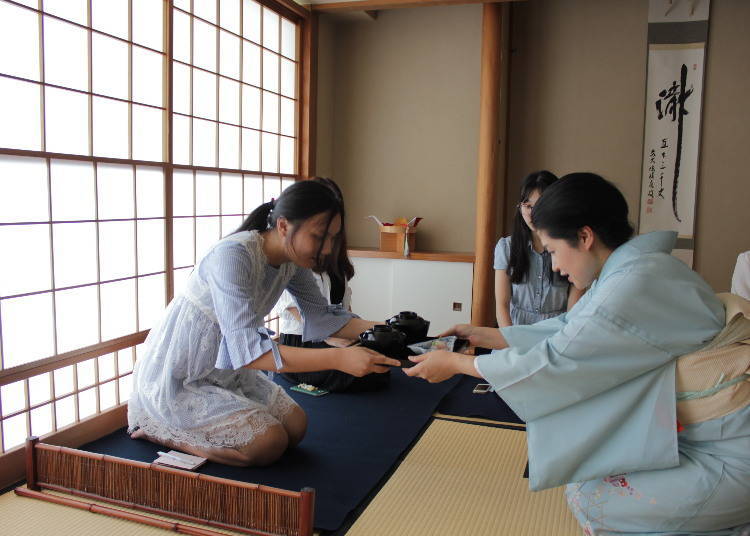
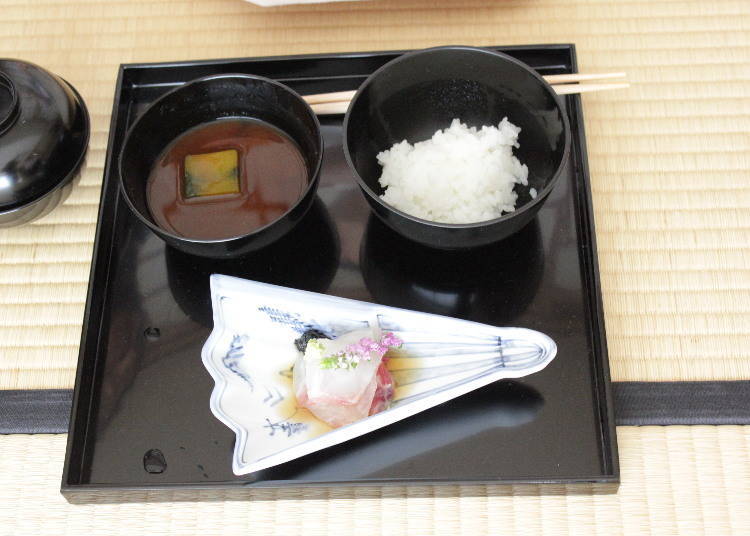
Today's tea party is done in the Kyoto style. It opens with Kaiseki food, which I'm told often uses fish doused in vinegar. The fish is to be eaten after the sake is presented.
The four eat while being taught the delicate manners of dining etiquette, such as placing the lids of the rice and miso cups together on the side, and to place the chopsticks on the tray's frame while eating. Before long the main course arrives: a cup of soup consisting of seasonal eel, winter melon, and mushrooms flavored with lemon. The food is brought out course by course to keep it at its warmest.
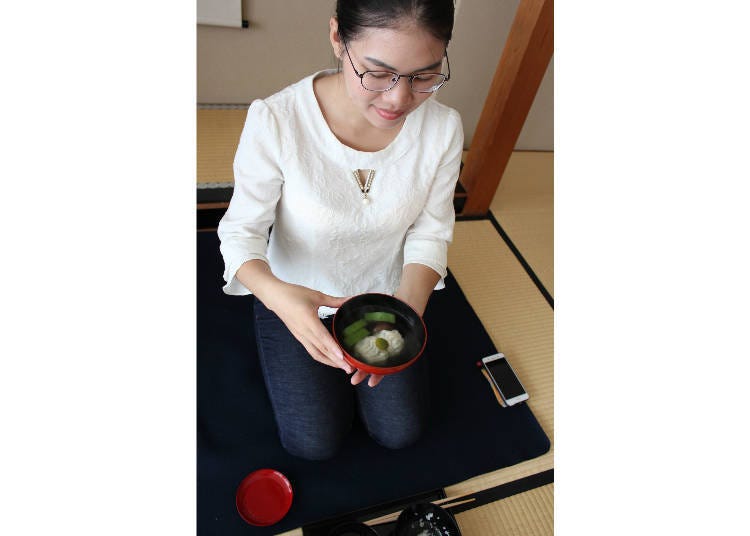
"This boiled dish is really good. It has a very seasonal taste."
"I liked the fish with vinegar."
Afterwards, a plate consisting of Kyoto-style grilled fish, taro, kuruma shrimp, and okra is brought out as a side.
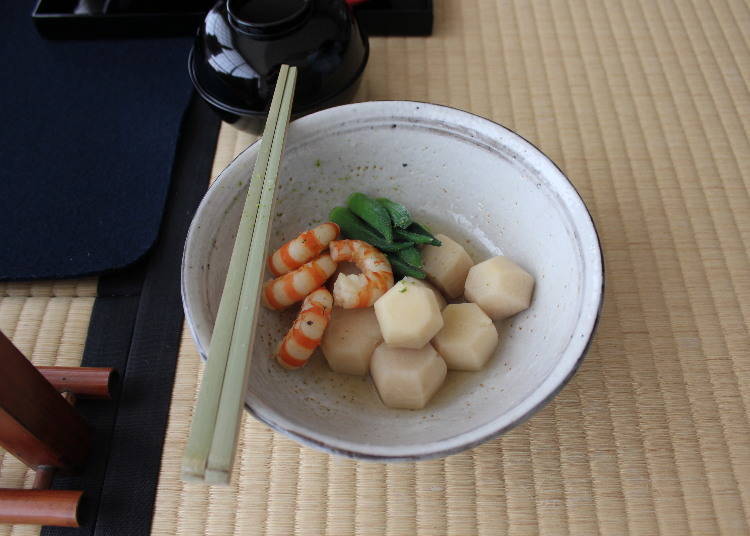
"I've been learning tea under a Japanese teacher back in China, but I've never had Kaiseki food before the tea."
Even the student who's learning Japanese tea ceremony in China and makes tea thrice a week is surprised. Then, small grilled fish and fruit is brought out before the sake. Drinking sake is said to cleanse you before you drink your tea.
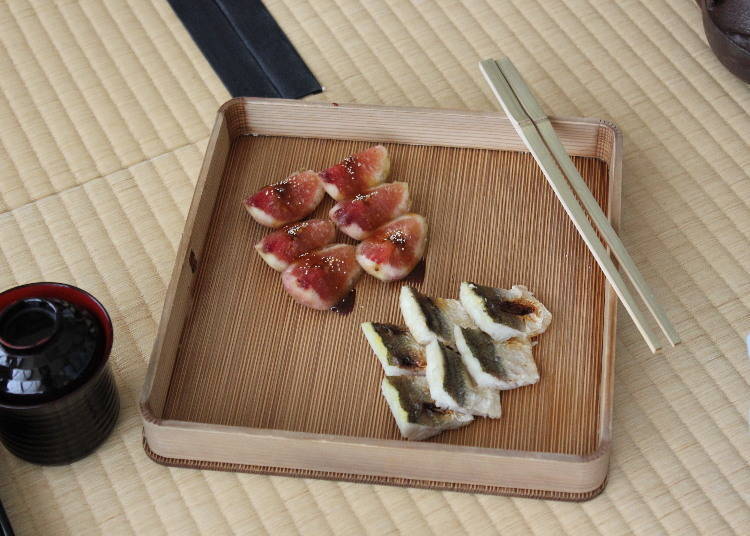
When the group starts feeling full, we learn that this was all in preparation to drink the tea, all to make the dark matcha taste better. Dark matcha is a very strong, concentrated form of matcha, and is the greatest of hospitable drinks. It's the true main course of today's ceremony.
Now It Begins! Drinking the Dark Matcha
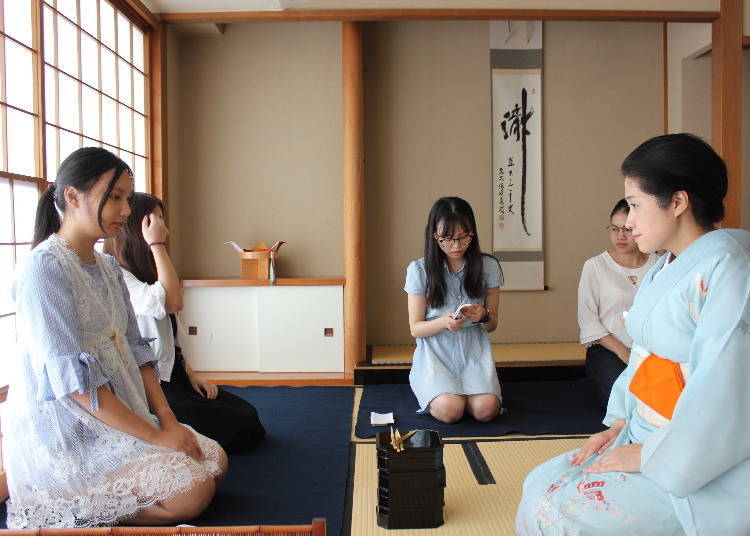
Nested boxes are carried into the tea room. Inside are beautiful sweets with yellow and faintly red grains atop them, called hatsuhagi. They're from Genta, a store famous for its raw tea sweets, and even one studying tea in Japan doesn't often get the chance to sample them. The group moves them from the box to the papers at their hands, cutting them bit by bit to eat them.
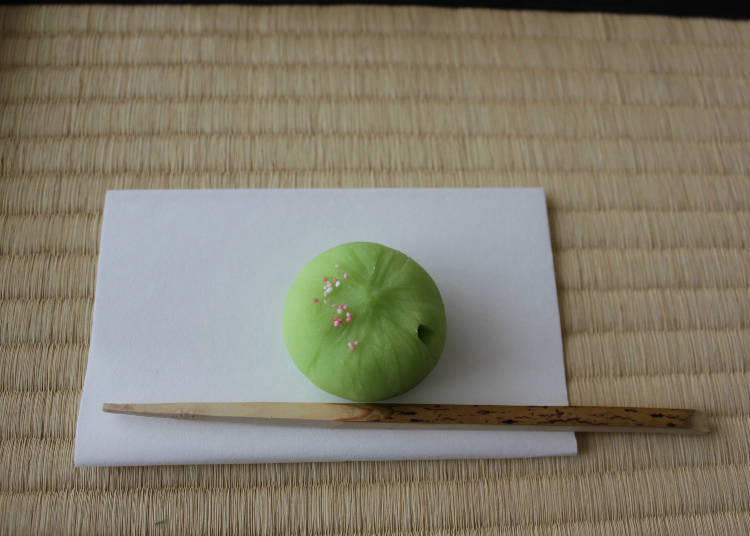
"It's really good, and just sweet enough."
As they eat, the komatcha is poured, boasting a deep green I've never seen before. Each member sips it three times, wipes their mouth with their tea paper, and passes it to the next person. Now, how does it taste?
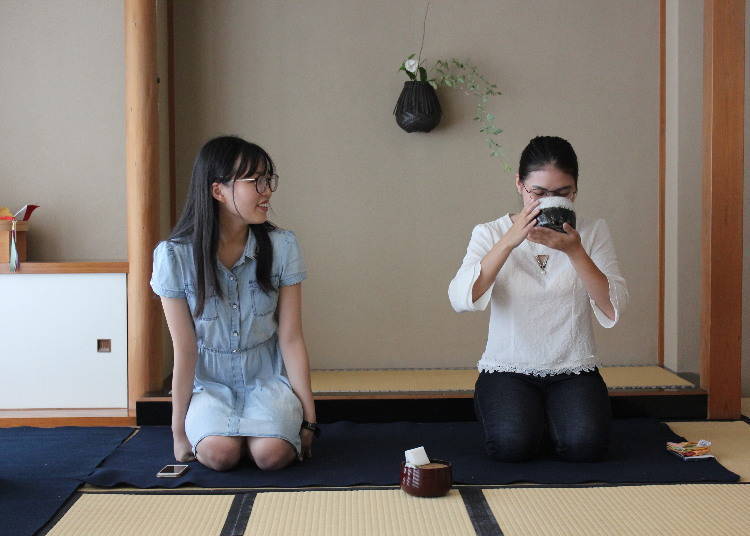
"It's very rich."
It seems to have tasted different and far richer than any matcha they've tasted before. One of the girls is curious about how the host often folded a cloth while making the tea, so she asks a question.
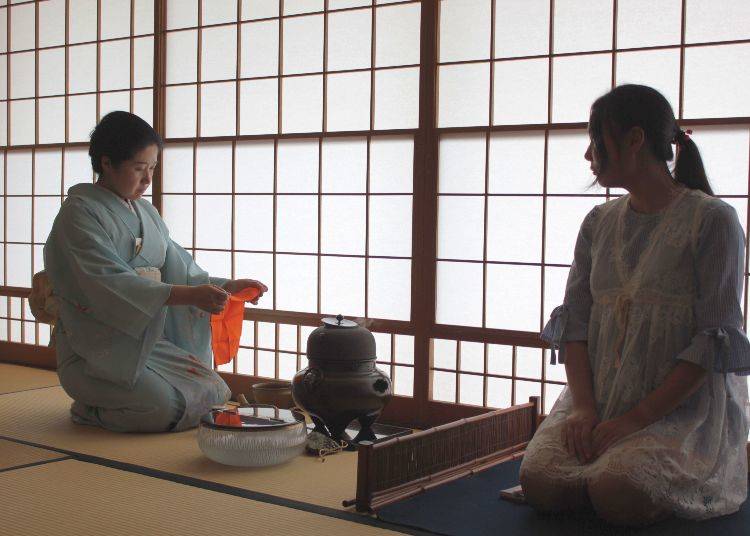
"Why did you look at the cloth and fold it before making the tea?"
"A good question. The host selects tools, utensils, and flowers that go with the theme -- Memories of Summer -- and conducts the tea ceremony. Checking that this silk cloth is clean and wiping down the teaspoons is an essential act, purifying the tools. Then, I have everyone see my preparations, as well as how I clean up both during and after they drink. If you've felt the theme even a little bit as you did, the tea ceremony is a success. It is as though I am revealing a love letter to everyone."
Next, they have dried sweets and light tea, wrapping up the tea ceremony.

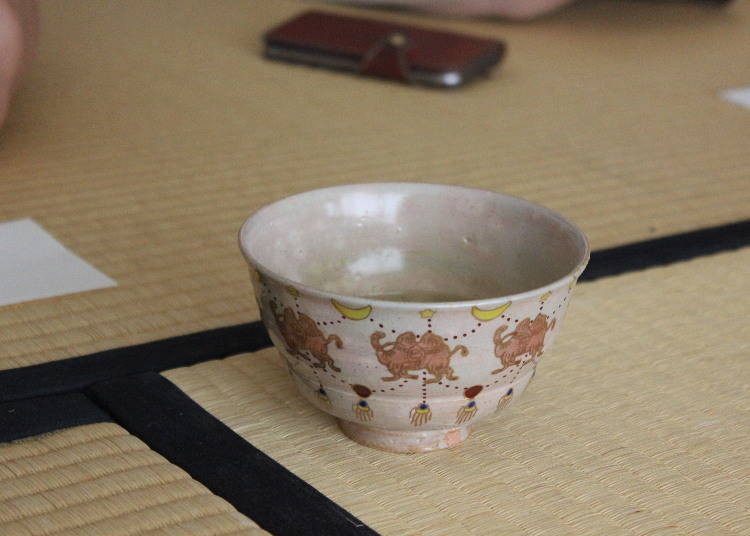
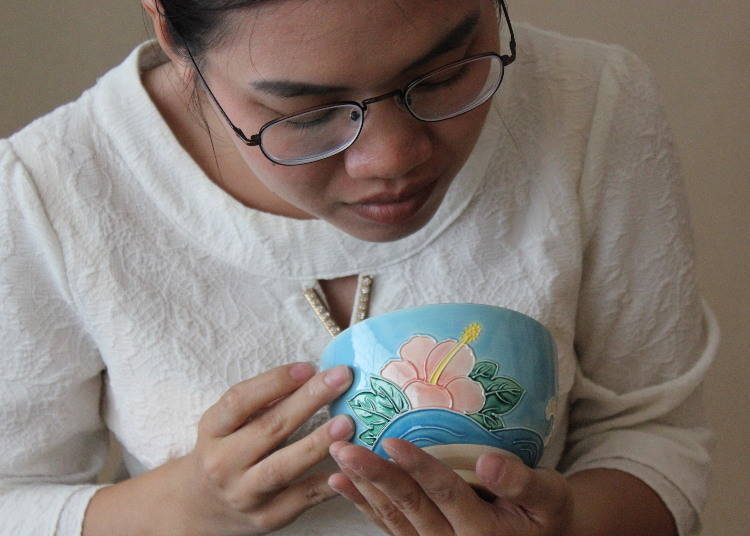
"It was all so new: the food was very tasty and the utensils were beautiful. The tea ceremony teacher was very nice, and I was really moved."
"I feel like I understand that 'love letter' feel a little bit."
It was a bit painful to sit on their knees the whole time (chairs are available in case of need), but the beauty of the ceremony won over that.
Japanese Cooking Class: Making Authentic Dashi
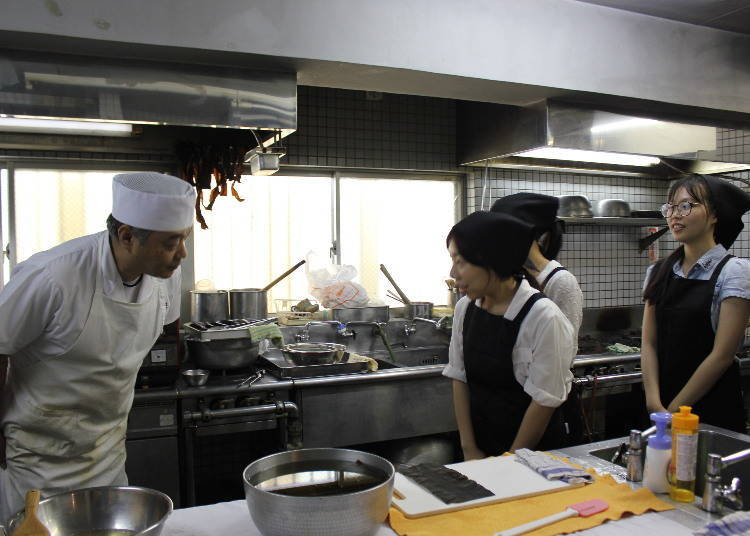
The four move to the kitchen and wear aprons. Now, they'll be learning from the same chef who made them the tasty Kaiseki food they'd just had. They'll be learning how to make dashi, the very core of Japanese cooking, and then how to use that dashi to make miso soup, rolled omelets, and eggplant in soy sauce. So, does everyone cook at home?
"Nope, haha."
Apparently, in China, it's usually the men who cook, and some of our students complain that they don't have anyone to cook for.
First, they poke holes in the eggplant to let the heat spread through it, then grill it over a net. When the skin is a crisp black and it's soft to the touch by tongs, they take it out and put it in an ice bath to cool it.
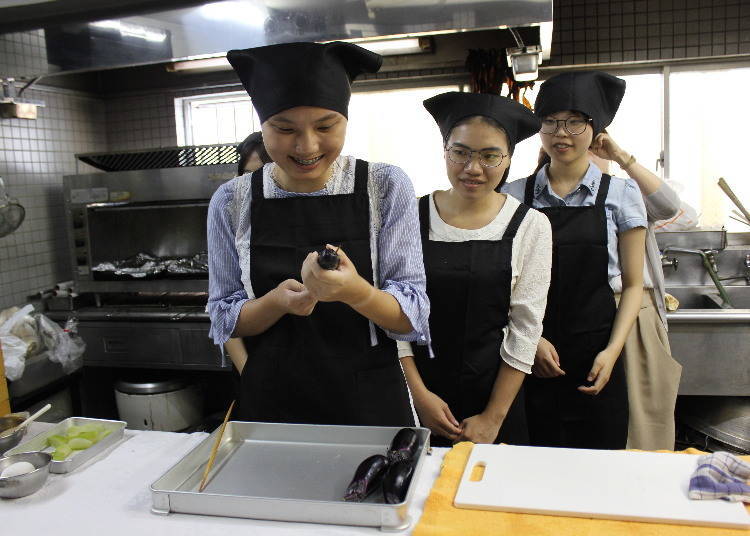
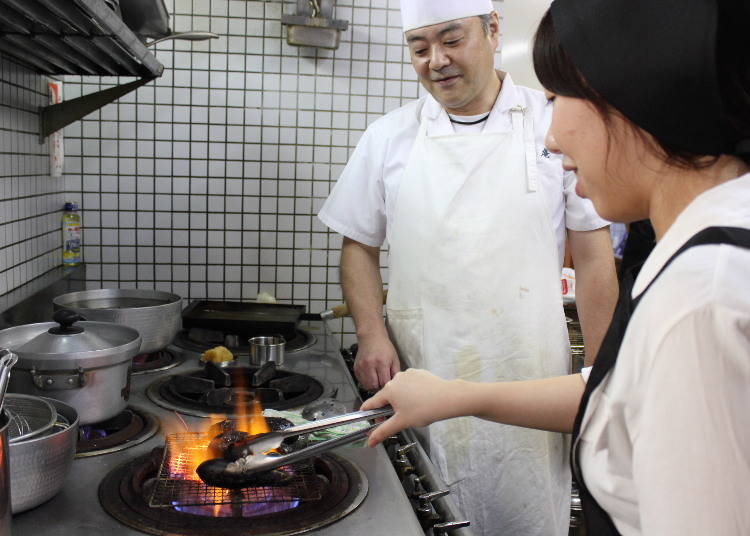
Next up is the dashi. The cook starts heating up a prepared pot of konbu submerged in water, and takes the konbu out right before it boils. Then, he adds in freshly shaved bonito flakes, takes out the waste and makes dashi. After filtering out the bonito flakes, it's time to taste it.
"Wow, it's really good!"
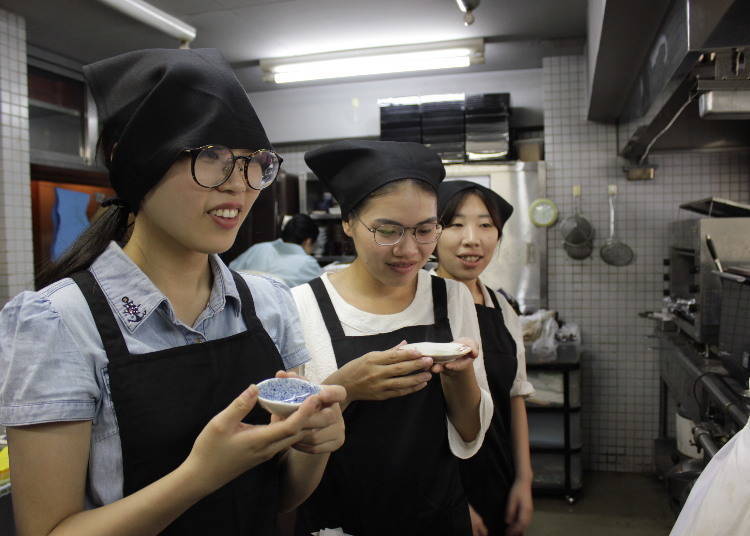
Fresh dashi is often used in soups, miso or otherwise, and boiled foods. First, to flavor the grilled eggplant, he mixes the dashi with sake, mirin, and light soy sauce. Miso soup is essentially 10 parts dashi and 1 part miso. He puts the mixture over fire and turns it off before it boils.
"The flavor's gotten a lot richer than before."
"This is really tasty, too."
The third way to use fresh dashi is a dashi rolled omelet. You mix dashi into the egg as you fry it, and the trick is to roll it up well. Now, let's give it a try.
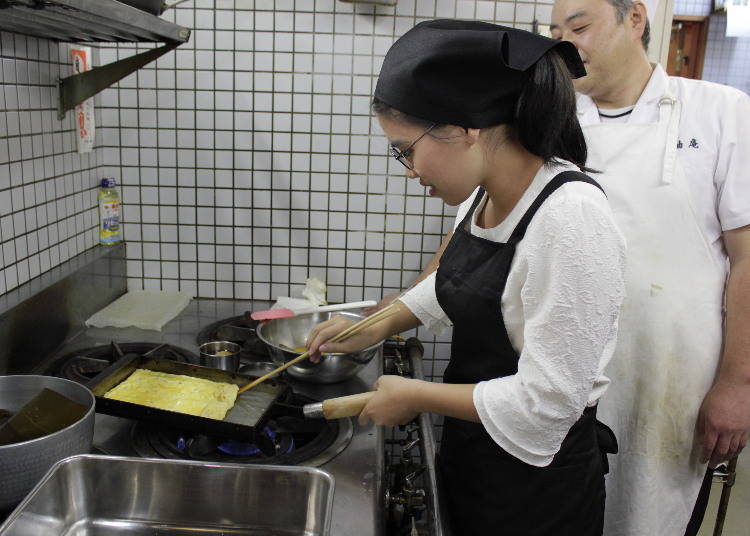
"This is tough!"
"But it's fun."
The freshly fried egg is rolled up. Now that the eggplant has cooled, they take the skin off with their hands, submerge it in the dashi, and cool it further in the fridge.
Then, they put winter melon into the miso soup, add in Japanese peppers, cut the egg, and supply rice. Then they take the eggplant out of the fridge, cut it into edible pieces, put bonito flakes on top, and proceed into tasting time.
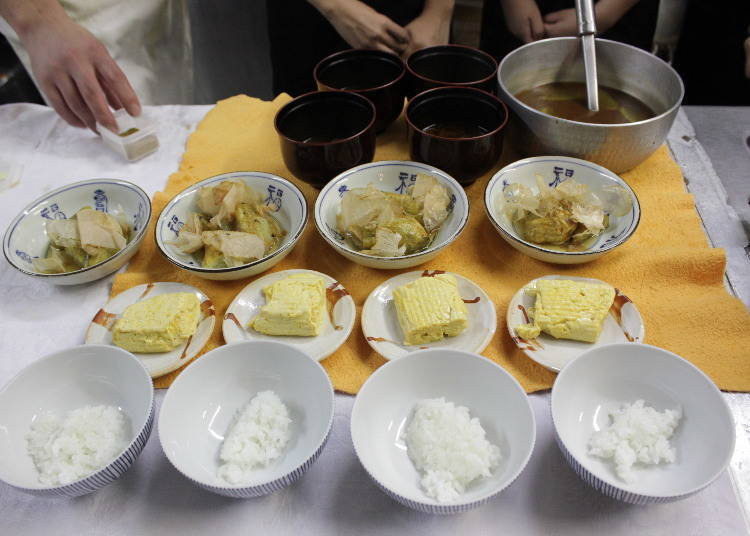
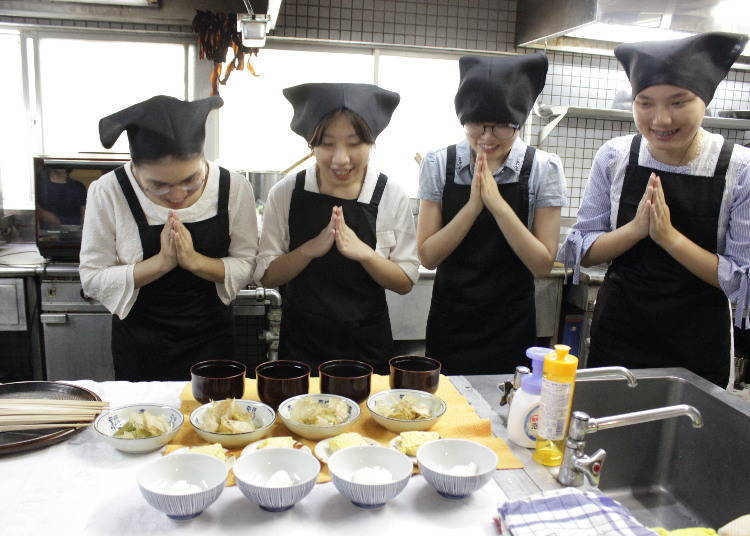
"This is the first time I've had a roll omelet that isn't sweet, but it's good."
"Winter melons taste really good in miso soup."
Though the staff helped, everything has a high-class, refined taste to it. The red miso in the soup goes very well with the dashi.
So, the four have had an experience they wouldn't normally.
"The very Japanese seasonal ingredients were wonderful. It was difficult to sit on my knees and eat with etiquette, but it was kind of like a ritual. I felt like I could see the Japanese spirit in all those rules."
"I'm really moved that they even taught me the proper way to eat the food, and I was able to learn a lot about tea ceremony. The teacher in the kitchen was really nice, and I'm glad I was able to make an omelet."
"I learned about Kaiseki cooking for the first time. Actually seeing and experiencing it was really interesting, and I got to learn the interesting things that go into Japanese cooking. It was very educational!"
Today's experience, cooking lesson included, took about 4 hours. However, there are other courses available, including an hour of tea ceremony alone, tea ceremony in yukata, a course where you can take the yukata home (an hour and a half), and a course that comes with bento and sake (an hour and a half). If you want to have a quiet tea ceremony experience in Tokyo, or if you really want to take on the ancient art, then you might want to give it a try.
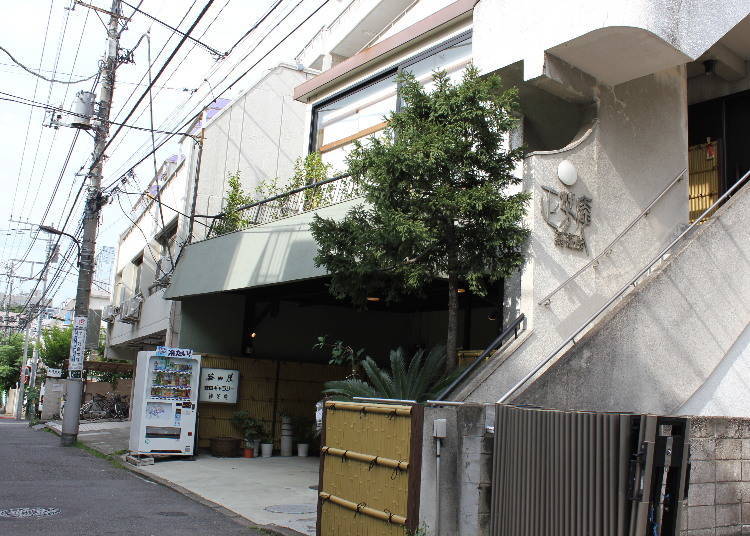
The second floor of the shop also has a gallery where you can see the works of the glass artist and predecessor of the classroom, Yoshinori Masuda. His works have been featured in modern art galleries, and he even gave one to Pope John Paul II, so foreign visitors also visit this gallery. (You can see if you ask.)

- Area
- Category
*Prices and options mentioned are subject to change.
*Unless stated otherwise, all prices include tax.
Popular Tours & Activitiess
Recommended places for you
-

TOKYO SKYTREE®
Landmarks
Ryogoku / TOKYO SKYTREE(R)
-

Ueno Zoo (Ueno Zoological Gardens)
Zoos, Aquariums & Botanical Gardens
Ueno
-

Tsukiji Outer Market
Old Towns (Shitamachi)
Tsukiji
-

ANO-NE Kids Club
Other Sightseeing
Ginza
-
Events

Tokyo Tower
Landmarks
Roppongi
-

Kappabashi Street
Old Towns (Shitamachi)
Asakusa
-

A Travel Game Changer! Go Hands-Free Between Tokyo and Kyoto with LUGGAGE EXPRESS by JTB and JR Tokai
by: Guest Contributor
-

Simply Oishii Wagashi School Discover Japanese Culture Through Wagashi: A Hands-On Experience!
by: Guest Contributor
-

[Extended Offer!](12% OFF KKday Coupon) Mt. Fuji Autumn Leaves, Powder Snow & More! 15 Best Tours to Experience Japan in Fall & Winter
-

Tokyo City Pass Upgrade: Harry Potter Studio Tour & Top Sights up to 85% Off
by: Guest Contributor
-

Keisei × Keikyu 16-Temple Goshuin Tour: Discover Deeper Tokyo & Yokohama
by: Guest Contributor
-

New Seibu L00 Series Launching in 2026! What to See Along the Tokyo-Area Golden Route
by: Guest Contributor
Inspiration for Accommodations
-

Enjoy Mt. Fuji from the Comfort of Your Room! Recommended Ryokan with Mt. Fuji View
-

Stay Near the Cherry Blossoms! Hotels for Cherry Blossom Viewing in Tokyo
-

Family-Friendly Hotels with Free Shuttle to Disneyland: Convenient Access for a Magical Stay
-

Top Ranked Hakone Hotels with Mt. Fuji View: Enjoy Stunning Scenery from Your Private Space
-

Convenient Tokyo Hotels with Airport Shuttle: Ideal for Families and Heavy Luggage
-

Stunning Tokyo Tower View Hotels: Enjoy Spectacular Scenery from Your Private Space
-

Convenient Asakusa Hotels with Kitchens: Ideal for Extended Family Visits
-

Experience Luxury: Hakone's 10 Best Five-Star Accommodations
-

Enjoy Mt. Fuji Autumn Leaves! Top Hotels Near the Popular Autumn Leaves Corridor
-

Experience Hakone Fall Foliage from Your Room with Stunning Views
-

T-CAT, the Tokyo City Air Terminal: Easy and Convenient Access to Narita and Haneda Airport
-

'Japanese people are way too sly!' 8 reasons why foreigners were shocked at Japanese beauty salons
-

Tokyo Roppongi|Roppongi Station Area Map & Sightseeing Information
-

Amazing "Dream Sleeper" Overnight Bus Between Tokyo and Osaka Is Revolutionizing Japan Tourism!
-

Your Trip to Akihabara: Tokyo's Geek Paradise (Activities, Hotels, Savers & More)
by: Himanshi Shah
-

Kichijoji – Explore Tokyo’s Top-Rated Stylish Suburb in Half a Day!
- #best ramen tokyo
- #what to buy in ameyoko
- #what to bring to japan
- #new years in tokyo
- #best izakaya shinjuku
- #things to do tokyo
- #japanese nail trends
- #what to do in odaiba
- #onsen tattoo friendly tokyo
- #daiso
- #best sushi ginza
- #japanese convenience store snacks
- #best yakiniku shibuya
- #japanese fashion culture
- #best japanese soft drinks












